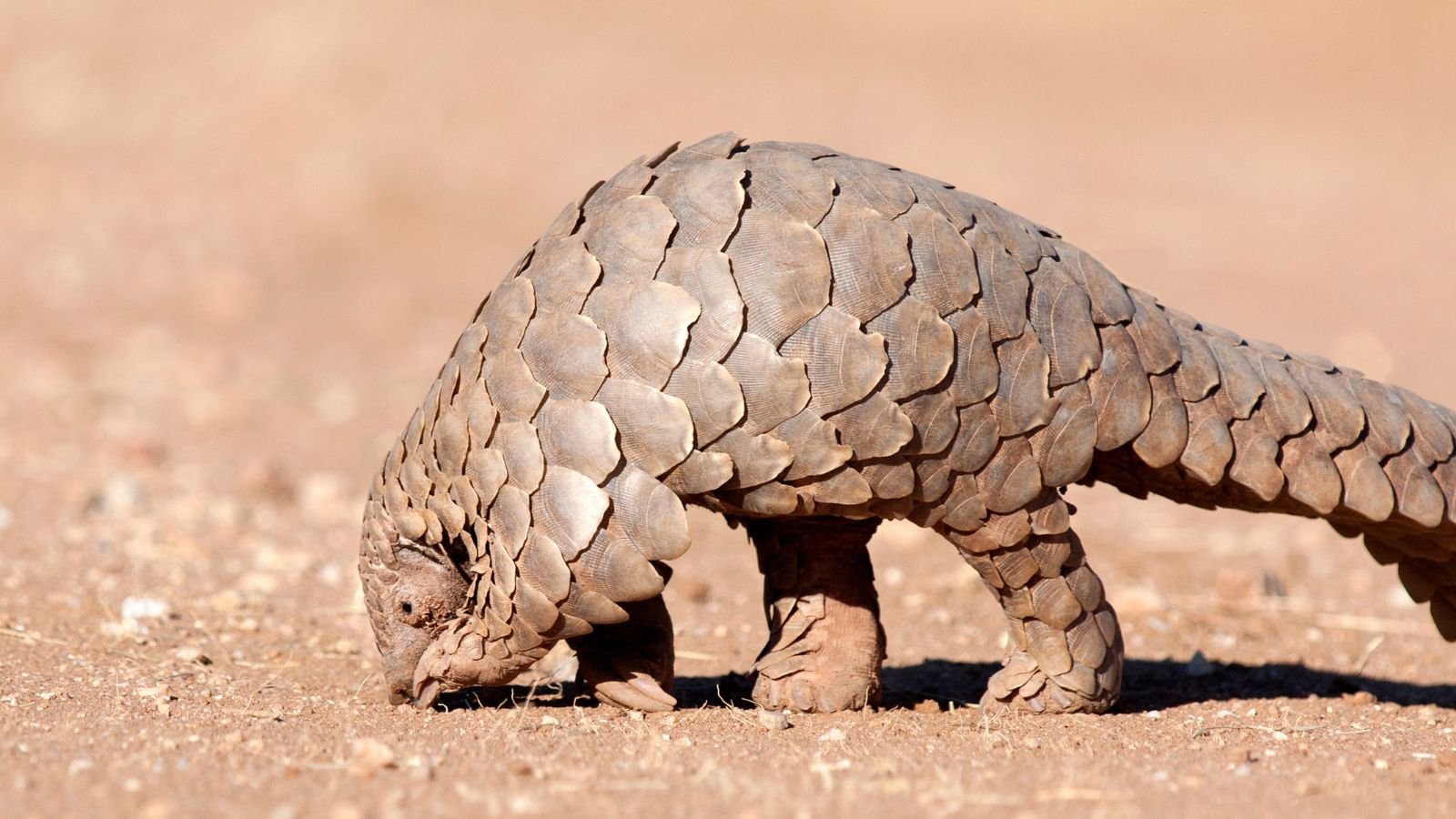Also called scaly ant-eaters, pangolins are a unique group of mammals belonging to the order Pholidota. There are eight extant or living species of pangolins, divided into three genera: Manis (the Asiatic pangolins) with four species, Phataginus, and Smutsia (the African pangolins) with two species each. Pangolins are the only mammals covered with scales. They are also the most trafficked mammals in the world. Here, we gathered information about why pangolins are the most trafficked animals in the world.
Why Are Pangolins The Most Trafficked Animals In The World
The illegal trafficking of pangolins is due to the high demand for their various body parts in some regions of the world, particularly Asia and Africa. They are hunted for their scales, claws, meat, and other products, which make them highly prized animals in the illegal wildlife markets.
The following are some of the main reasons making pangolins the most trafficked animals in the world:
Pangolin Scales: Use In Traditional Medicine

Pangolin scales are made of keratin, the same material that makes our nails and hair. Their scales are believed to have medicinal properties and are used in traditional Chinese medicines and some African medicinal remedies. The scales are either ground into powder or used in other forms to treat diseases like; arthritis and joint pain, asthma, skin diseases, menstrual problems, and lactation issues with breastfeeding mothers.
In some other Asian countries like India, Nepal, and Pakistan, the body parts of pangolins are used for medicinal purposes. In some regions of India and Nepal, people believe that wearing pangolin scales is helpful to prevent pneumonia. In southern Palawan, Philippines, native people believe that if elders wear belts made of pangolin scales, it could prevent prostate issues in them.
Modern science provides no evidence for the effectiveness of these practices. There is also no logical mechanism of action for these traditional medicines. Despite worries about toxicity, spreading diseases from animals to humans, and the risk of wiping out the species, these practices are still popular and fuel the black market for pangolin body parts.
Pangolin Meat: A Delicacy And Status Symbol In Some Cultures

In countries like China and Vietnam, the meat of pangolins is considered a delicacy and symbol of status. The consumption of pangolin meat is associated with wealth and status and is usually served at expensive restaurants and special banquets. In some African countries, their meat is consumed as bushmeat.
The significantly higher price of pangolin meat than other types of meat makes it a rare delicacy and highly demanded by wealthy consumers. Due to the high demand and price, poachers seek to ensure the supply of fresh meat and this puts additional pressure on the already declining pangolin population.
Other Products Derived From Pangolins
Other body parts of pangolins are also used in various ways:
- The blood of pangolins is consumed as a healing remedy in some cultures to cure various health issues.
- Their claws are used for making traditional jewelry.
- Their skin is processed and used for making products like shoes, bags, and belts. Such products have demand in the Americas.
All these factors together make pangolins highly prized. The attractive prices lead to further poaching and their rapid decline in the wild. Despite the national and international laws that prohibit their illegal hunting and international trade, the continued demand for pangolins and their body parts makes them the most trafficked animals in the world.
How Pangolins Are Poached And Trafficked?

Poaching
Pangolins are poached in their natural habitats usually at night, as these animals are nocturnal and active at night. The poachers either kill them immediately and remove their scales and other body parts for easy transport or keep them alive and sell them as a whole.
Pangolins are then passed on to a middleman who facilitates their transport. They are hidden among legal shipments or transported through secretive routes to avoid checking. The middleman may work for bigger trafficking groups to make sure that pangolins or their body parts are smuggled across the borders.
Smuggling Routes
In Africa, pangolins are mainly poached in Nigeria, Cameron, and the Democratic Republic of Congo. While in Southeast Asia, they are usually poached in Vietnam, Indonesia, and Myanmar. Countries like Singapore, Malaysia, and Thailand have been identified to serve as transit hubs due to their well-connected air and sea routes. Through these countries, pangolins are smuggled to end markets.
International Trade Networks
Organized crime networks often facilitate the trafficking of pangolins. These groups operate supply chains and transport pangolins from source countries to destination countries. To move pangolins across international borders, smugglers often depend on corrupt officials and weak enforcement at border checkpoints. To sell pangolins, traffickers use encrypted platforms and dark web markets. They are also sold in physical black markets in urban centers like Hong Kong and Hanoi.
What Is The Most Smuggled Animal In The World?
The most smuggled animals in the world are pangolins. Estimates show that about one million pangolins have been illegally hunted in a single decade.
What Is The Biggest Threat To Pangolins?
Illegal hunting by humans for meat and scales is the biggest threat to pangolins.
How To Stop Pangolin Trafficking?
The following two major steps should be taken to stop pangolin trafficking:
- Decrease the demand for pangolin meat and scales. This task can be achieved through awareness campaigns to consumers.
- Enforce the laws by strengthening the agencies that are assigned to the protection of pangolins and their habitats, such as anti-poaching units and protected area management.
Which Country Eats Pangolins?
In China and Vietnam, people eat pangolin meat as a delicacy. In some African countries, pangolin meat is consumed as bushmeat.

